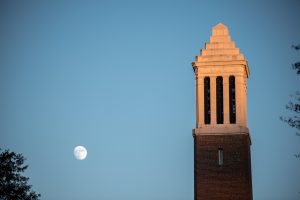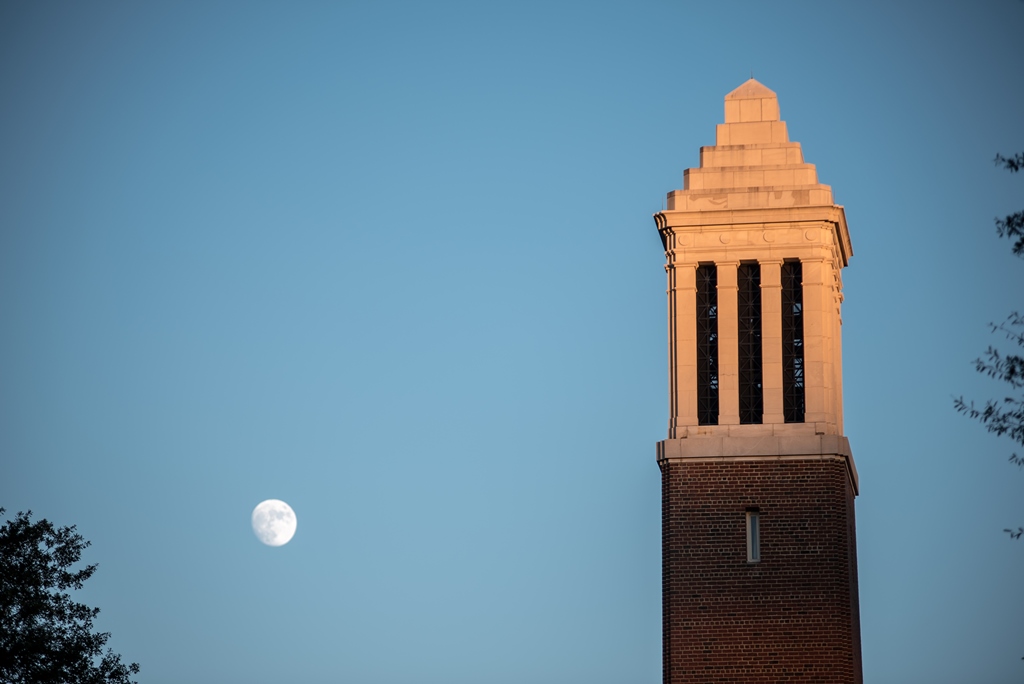 TUSCALOOSA, Ala. — The University of Alabama’s department of physics and astronomy will hold a public viewing of the “supermoon” that will be visible Nov. 14.
TUSCALOOSA, Ala. — The University of Alabama’s department of physics and astronomy will hold a public viewing of the “supermoon” that will be visible Nov. 14.
The viewing will be held at the Gallalee Hall Observatory from 8-9 p.m.
Dr. Dawn Williams, an associate professor in UA’s physics and astronomy department, will give a lecture at 7 p.m. prior to the viewing period and will be in charge of the 16-inch reflective telescope that will provide a close-up view of the supermoon.
The moon’s orbit is eccentric, meaning that it’s closer to Earth at some points in its orbit than it is at others. When the moon is closest to Earth, it’s called a perigee, and when it’s far away, it is referred to as an apogee. When the moon is full and at perigee at the same time, which doesn’t happen often, it’s physically closer to Earth, and the full moon looks a little bigger.
The full moon will be at is closest point since 1948 and the closest it will be until 2034. It will be about 14 percent bigger in size and about 30 percent brighter than average. The supermoon is best seen on the horizon near a landmark, which can be used for scale.
“We can see craters and mountains on the moon very easily through the telescope,” said Williams. “It looks quite spectacular because it’s so close to Earth.”
Williams’ lecture will address her research related to Ice-Cube, which is a neutrino detector located at the South Pole. Ice-Cube detects neutrinos, which are extremely low mass, difficult-to-detect particles that travel through matter easily.
If time allows, the viewing period may include other objects such as star clusters and binary stars. Williams says it can be difficult to look at other things with a full moon in the sky, however, because it’s so bright that it washes out the other objects.
UA’s department of physics and astronomy typically holds observing nights about once a month. All sky viewings are contingent on the weather. Cloudy skies are not conducive to viewing.
The department has a number of telescopes that allow for the observation of comets, the transits of planets and even the sun through telescopes equipped with filters.
“It’s a chance to meet with other people who are interested in astronomy,” said Williams. “With the instruments we have, such as our 16-inch telescope and a fully-mechanized observatory dome, we are able to provide the public with a striking view of astronomical objects.”
Gallalee Hall is at the northeast corner of University Boulevard and Hackberry Drive, less than a block from Denny Chimes.
UA’s department of physics and astronomy is part of the College of Arts and Sciences, the University’s largest division and the largest liberal arts college in the state. Students from the College have won numerous national awards including Rhodes and Goldwater scholarships.
Contact
Derek Hooper, student writer, media relations, 205/348-5320; Chris Bryant, UA media relations, cbryant@ur.ua.edu
